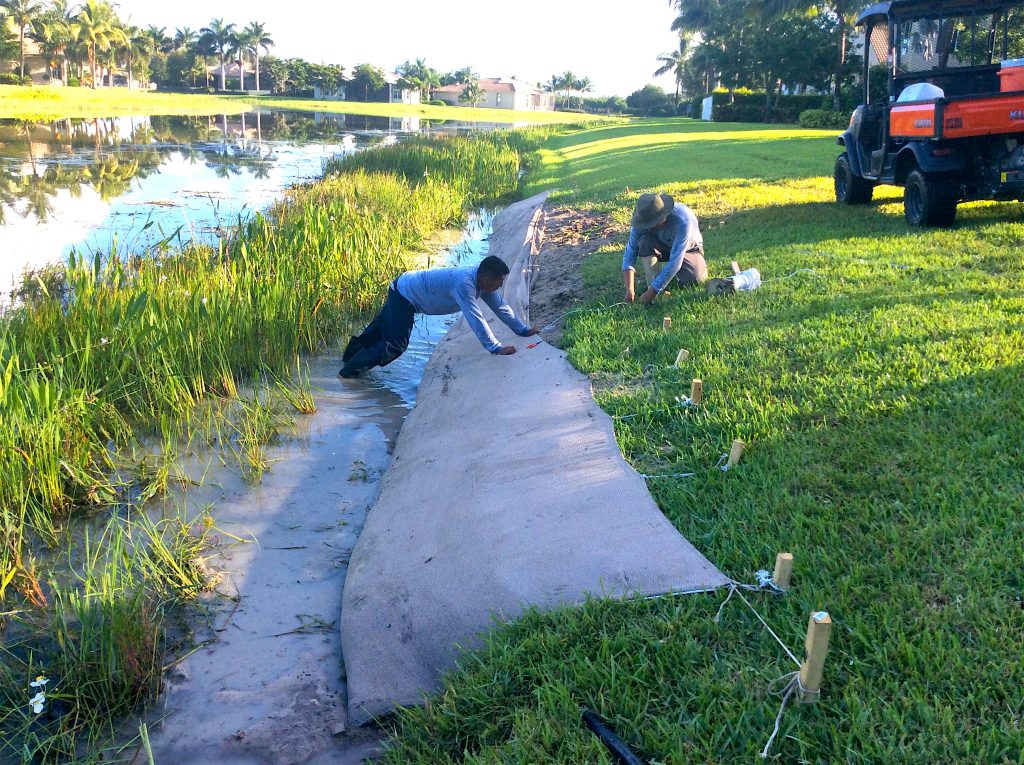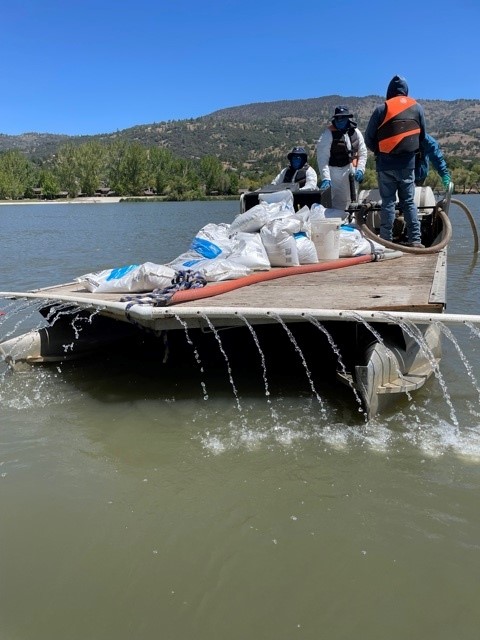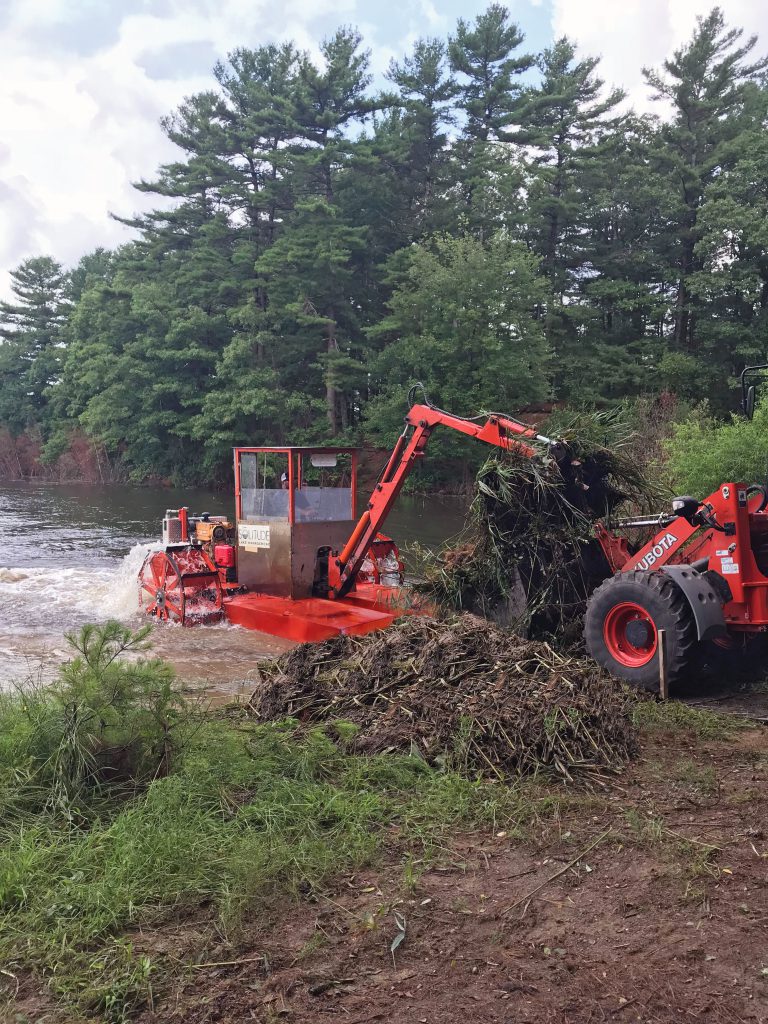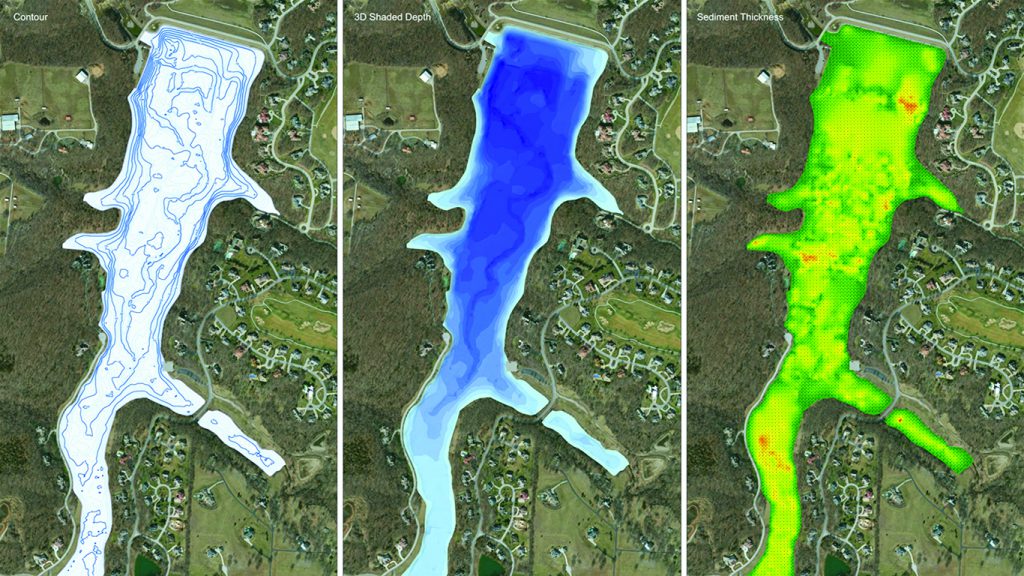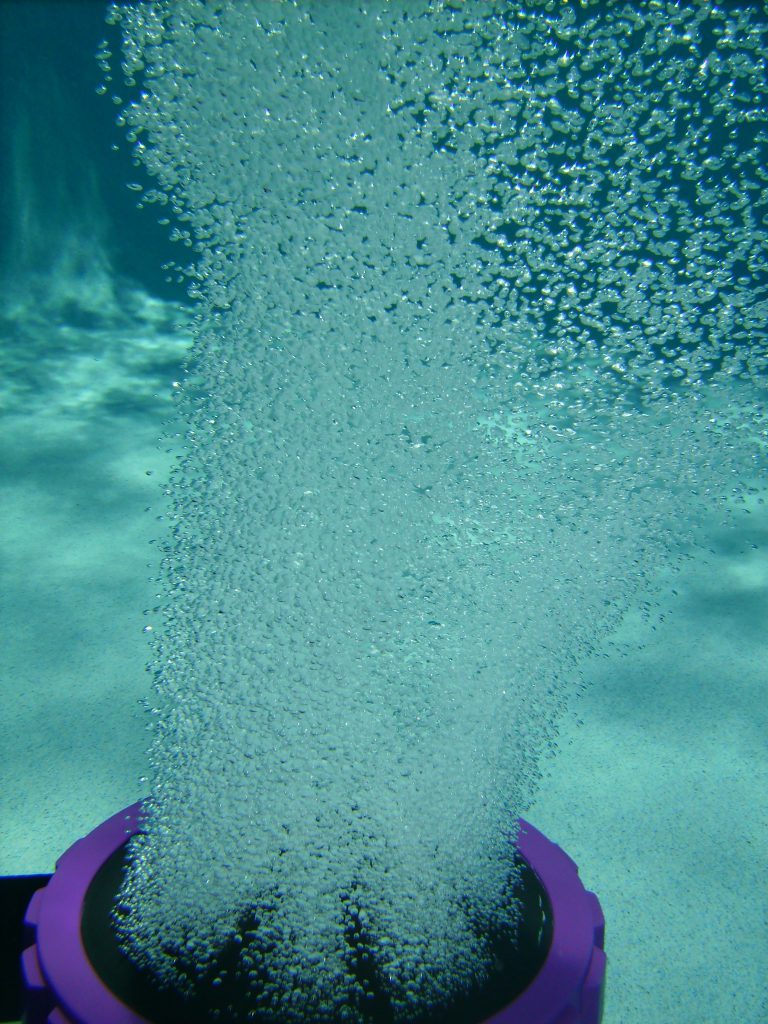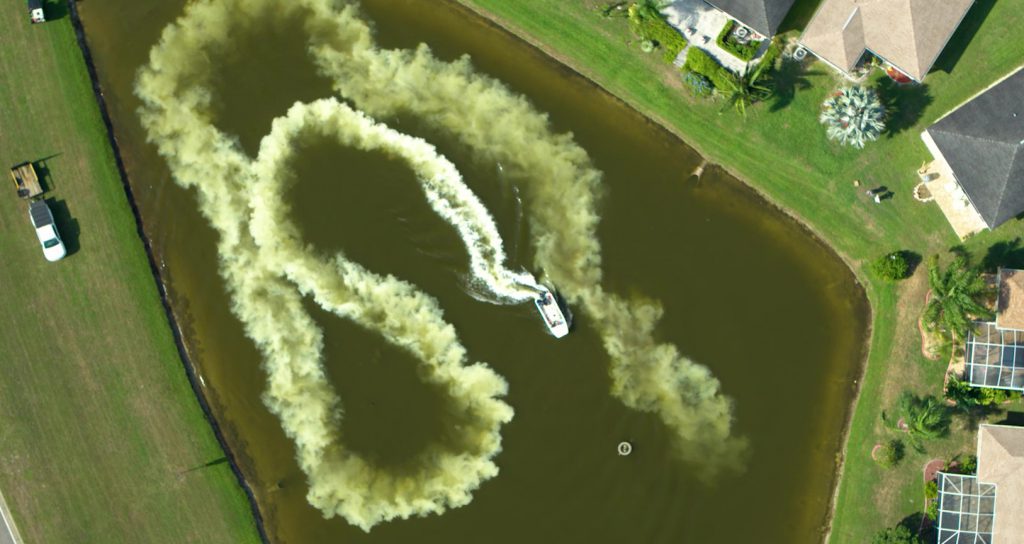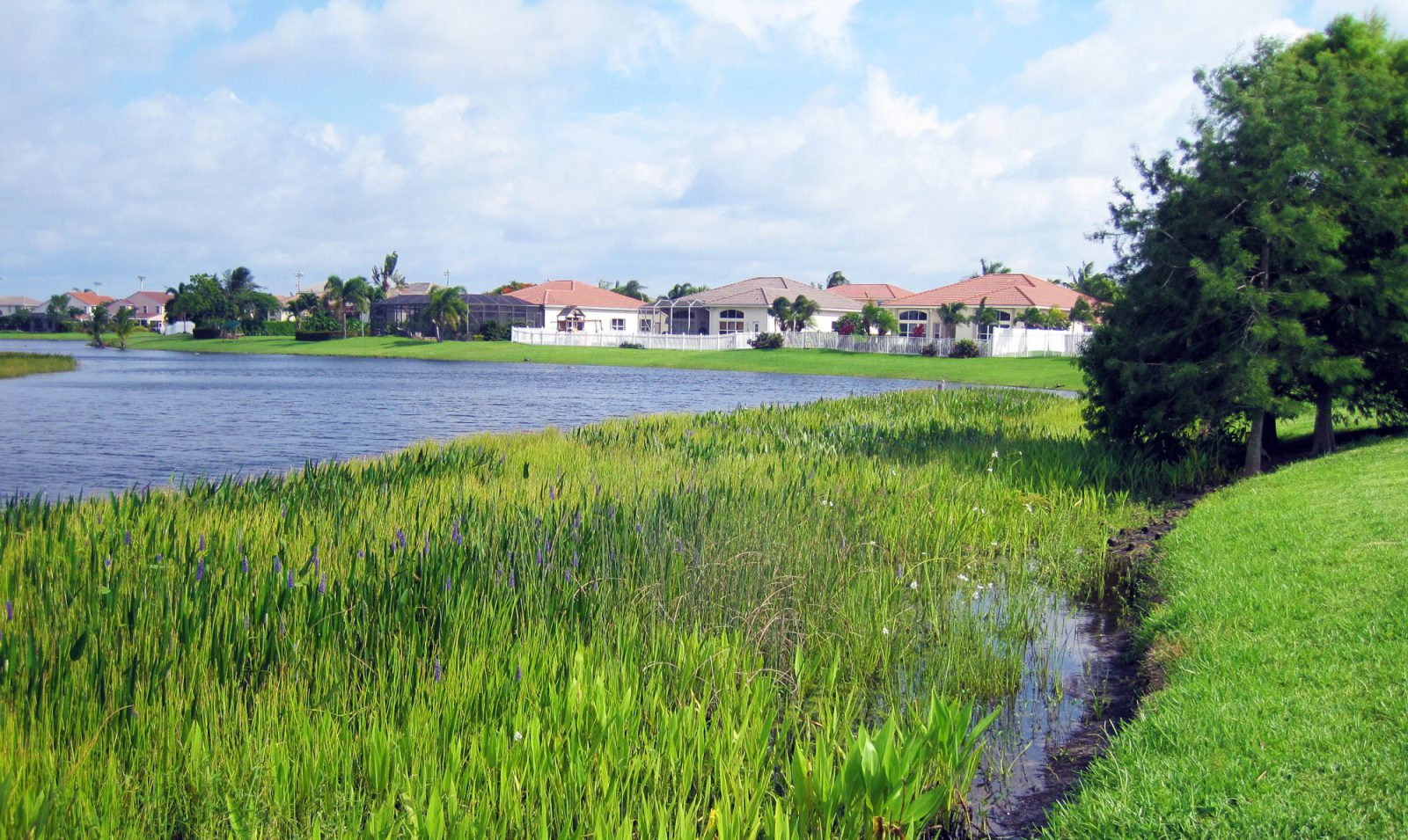
Lake and Pond Management Tips For Florida's Dry Season
Proper management of your Florida wetland, fishery, lake, or pond during the winter months will get you closer to your freshwater goals come spring. From shoreline restoration and nutrient binding to clearing out pond weeds and installing a beautiful fountain or submersed aeration system, now is the time to take action to ensure your waterbody is in proper health when warmer weather returns.
Shoreline Restoration
The lack of rain during the winter season means water levels in lakes and ponds often drop. Take advantage of this timeframe to repair damaged shorelines using patented knitted mesh systems. This new mesh technology can be used to create a long-lasting sediment containment barrier around the water that provides up to four feet of shoreline protection for more than 10 years. And don’t forget to schedule your spring buffer plantings now to take place between March and June.
Nutrient Remediation
The dry season is an ideal time for nutrient remediation using Phoslock, Alum (aluminum sulfate) or Biochar, which are used to eliminate excess nutrients from the water column, thus reducing future aquatic plant and algae growth. The lack of rain during this time will help ensure these nutrient remediation materials are not be diluted or washed out of the pond before binding with nutrients. The lack of rain will also reduce the amount of nutrient-rich plant trimmings and fertilizers introduced into the pond by stormwater runoff.
Plant Removal
The winter months are the best time to manage or clear out invasive plants like Brazilian Pepper, Melaleuca, Chinese Tallow and Peruvian Primrose Willow. Likewise, a reduction in boating and recreation offers more opportunities for submersed plant removal via mechanical harvesting or hydro-raking. Though the days are shorter, the weather is more moderate, allowing crews to work longer and more efficiently.
Bathymetric Mapping
Accurate knowledge of water volumes and depths are essential for managing your lake or pond properly. From designing a water quality monitoring program to introducing an aeration system, many aquatic resource tools depend heavily on the accuracy of your bathymetric map, a technology that reads and records the terrain of your lake or pond. Slower plant growth and reduced recreation during winter months allows increased boat access and more accurate mapping across your property.
Fish Stocking
Fisheries management is very temperature driven. In addition to being less stressful on lake and pond management crews, the dry season weather is also less stressful on fish. Colder water contains more oxygen, making the winter months more favorable for electrofishing surveys and fish stocking. Consider introducing Triploid Grass Carp for natural vegetation control, mosquitofish for midge and mosquito control, and Bluegill for fishing fun. Because their natural predators are less active in the cooler weather, these fish will have all winter to establish their populations.
Introduce Aeration
No matter where you live, installing an aeration system in the summer should be avoided or done with great caution. This is because akes and ponds experience stratification when weather is warm and sunny. Turning on an aeration system during this time means rapidly mixing oxygen-rich water at the bottom of the aquatic resource with the oxygen-deprived water near the surface, which can stress aquatic organisms and cause fish kills. In the dry season, however, most lakes will contain sufficient oxygen levels throughout the water column. The installation of an aeration system during this time will provide lasting benefits to your aquatic resource without negatively impacting the creatures that call it home. Aeration systems can also be paired with nanobubble technology for added benefits.
Perform Maintenance on Floating Fountains
The off-season is the best time to consider scheduling critical maintenance and “TLC” for your fountain, such as an oil and seals maintenance service. This important fountain maintenance task will ensure that your seals are working as designed, preventing any water from leaking into the unit, and that your pond fountain is running with clean oil. The oil and seals service includes performing an internal inspection of the power unit (motor and related parts), making any necessary adjustments, replacing any worn parts, and changing the oil, rotary shaft seal, and all related parts. Changing the oil in your fountain works much like changing the oil in your car: the cleaner the oil, the smoother it runs.
Pond Liming
Depending on where you live, winter lime applications may be extremely beneficial for your lake, pond or fishery by making water quality more conducive to the development of fish and other aquatic organisms. This is an especially common practice in Texas and regions where soils are overly acidic. Because limestone can take several weeks to fully impact water pH, applications during the cooler months can help you get a head start on the achievement of your waterbody goals for the coming year.
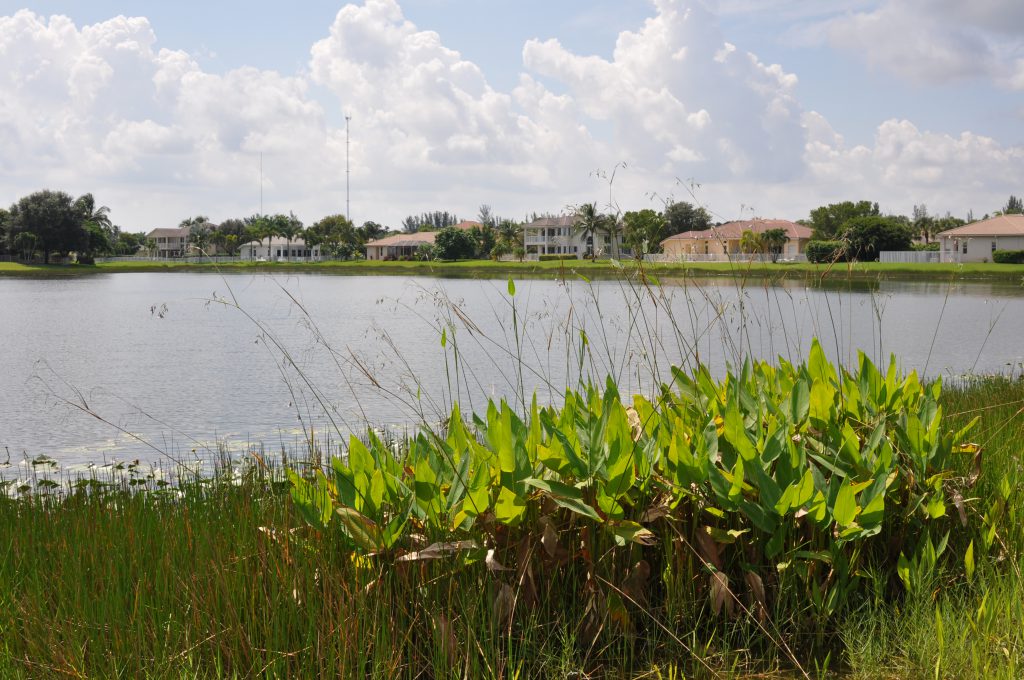
Get Started On A Customized Management Plan
The dry season may seem like a time when lake and pond maintenance can be put on the backburner, but the decisions you make now can have an enormous impact on your experience come spring. No matter where you live, aquatic resource management is a year-round endeavor. Contact your lake management professional today to get started on your winter maintenance plan.








